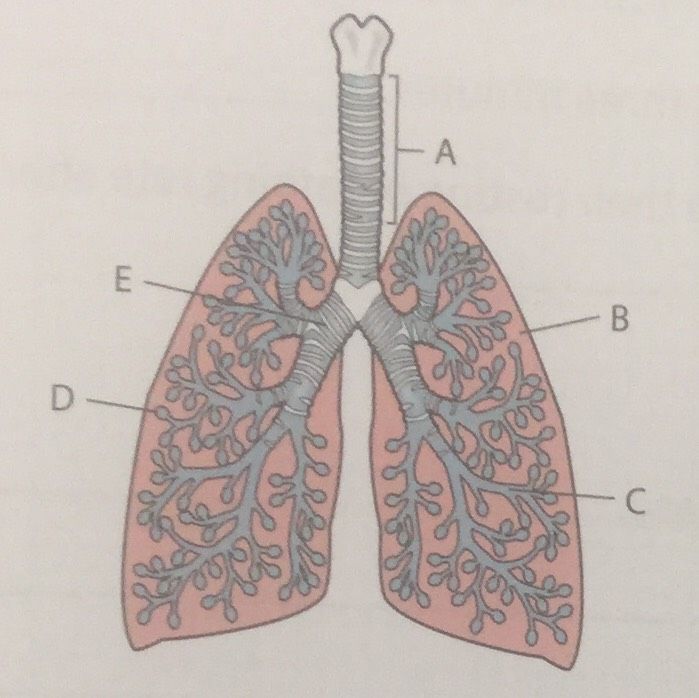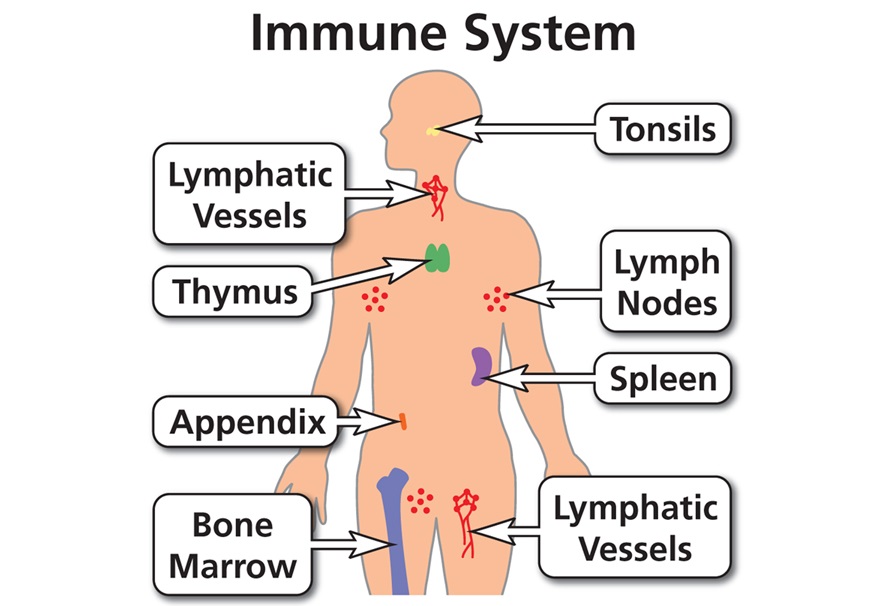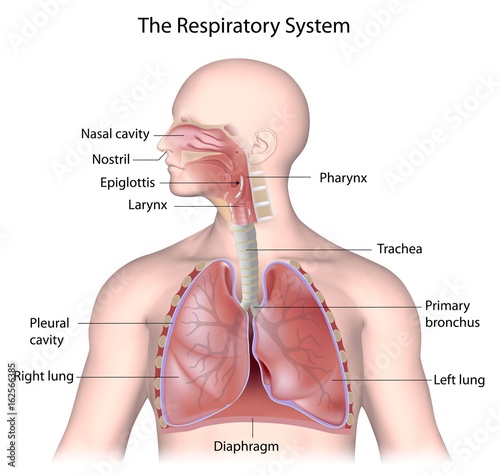38 respiratory system with labels and functions
Respiratory System Anatomy, Diagram & Function | Healthline The respiratory system, which includes air passages, pulmonary vessels, the lungs, and breathing muscles, aids the body in the exchange of gases between the air and blood, and between the blood and... Human Respiratory System - Diagram, Features, Parts and Functions - VEDANTU Features of the Human Respiratory System. The structure of the lungs is created in such a way that it helps the exchange of gasses. The other parts of the respiratory system include the nose, larynx, pharynx, trachea or the windpipe, bronchi, lungs, blood vessels, the airways for the passage of air, and the muscles that support the breathing.
Respiratory System Label Diagram Teaching Resources | TpT Students will label the parts of the respiratory system on the diagram, list the structures on the data table, and then describe the function of each structure. The students enjoy coloring the structures as well. I have used this worksheet as a classwork assignment as well as for a respiratory system quiz. The answer key is included.
:background_color(FFFFFF):format(jpeg)/images/library/11119/anatomy-of-nervous-system_english.jpg)
Respiratory system with labels and functions
Respiratory System Anatomy and Physiology - Nurseslabs The functions of the respiratory system are: Oxygen supplier. The job of the respiratory system is to keep the body constantly supplied with oxygen. Elimination. Elimination of carbon dioxide. Gas exchange. The respiratory system organs oversee the gas exchanges that occur between the blood and the external environment. Passageway. Label the parts of the human respiratory system. Also, write their ... Solution. 1. Bronchus - The bronchus (plural: bronchi) are extensions of the windpipe that move air to and from the lungs. 2. Trachea - The trachea is a wide, hollow tube that connects the larynx to the bronchi of the lungs. 3. Lung - It is the main part of the respiratory system where the exchange of gases takes place. 4. Respiratory system diagram: Function, facts, conditions, and more The respiratory system allows people to breathe. It is made up of several organs and structures that transport air into and out of the lungs, exchanging oxygen with carbon dioxide. While the...
Respiratory system with labels and functions. Free Respiratory System Worksheets and Printables The human body needs oxygen to breathe and function and live. Your children are going to love learning about the system that keeps us alive and breathing. ... Lungs Anatomy Worksheet - This fun worksheet not only has kids label the parts of the respiratory system but then use the labels to solve a crossword puzzle. How We Breathe Awesome ... The Respiratory System (Label) Diagram | Quizlet The Respiratory System (Label) STUDY Learn Write Test PLAY Match Created by steve_murksTEACHER Terms in this set (9) Nasal cavity Pharynx Larynx Bronchioles Alveoli Diaphragm Bronchi Lungs Trachea Sets found in the same folder The Skeletal System (Label) 18 terms steve_murksTEACHER Cardiovascular System 28 terms ashlee_dinham 5 Functions of Respiratory System | Respiratory Anatomy The following are the five key functions of the respiratory system. 1. Inhalation and Exhalation Are Pulmonary Ventilation—That's Breathing The respiratory system aids in breathing, also called pulmonary ventilation. In pulmonary ventilation, air is inhaled through the nasal and oral cavities (the nose and mouth). Respiratory system structure and function - BBC Bitesize Respiratory system structure and function Passage of air into the lungs Air enters the body and is warmed as it travels through the mouth and nose. It then enters the trachea. The trachea divides...
13.2 Structure and Function of the Respiratory System Upper respiratory tract organs provide a route for air to move between the outside atmosphere and the lungs. They also clean, humidify, and warm the incoming air. No gas exchange occurs in these organs. Nasal Cavity The nasal cavity is a large, air-filled space in the above and behind the nose in the middle of the face. Organs of the Respiratory System And Their Functioning They carry out the work of supplying the body with oxygen and removing carbon dioxide. 1. The left lung is divided into 2 lobes (superior and inferior) while the right lung into 3 (superior, inferior and middle). 2. Each lung possesses a triangular organ called hilum; blood vessels, nerves, lymphatics and bronchi pass through the hilum. Alveoli Human Respiratory System - BYJUS The functions of the human respiratory system are as follows: Inhalation and Exhalation. The respiratory system helps in breathing (also known as pulmonary ventilation.) The air inhaled through the nose moves through the pharynx, larynx, trachea and into the lungs. The air is exhaled back through the same pathway. Respiratory System • Anatomy, Parts & Functions Respiratory System Anatomy - Major Zones & Divisions. The respiratory is separated into the conducting zone and the respiratory zone. The conducting zone include structures that facilitate air to move in and out of the lungs. The respiratory zone allow inhaled oxygen to diffuse into the lung capillaries in exchange for carbon dioxide.
Respiratory System Organs and Their Functions - New Health Advisor Respiratory System Organs and Their Functions The respiratory system plays a vital role in the body, by providing your cells with much needed oxygen, as well as excreting carbon dioxide, which can be deadly if allowed to accumulate. Major parts of the system include the airways, the lungs, and the muscles of respiration. Respiratory System - Medical Terminology for Healthcare Professions The cilia of the respiratory epithelium help to remove mucus and debris with a constant beating motion, sweeping materials towards the throat to be swallowed. This moist epithelium functions to warm and humidify incoming air. Capillaries located just beneath the nasal epithelium warm the air by convection. Functions of the Respiratory System The respiratory system is made up of multiple small and large organs, bones, and muscles, which all work together to accomplish each task of the system. Broadly classified into the upper and lower respiratory tracts, here are the functions of the different parts: Upper Respiratory System Function of the Nose human respiratory system | Description, Parts, Function, & Facts human respiratory system, the system in humans that takes up oxygen and expels carbon dioxide. The human gas-exchanging organ, the lung, is located in the thorax, where its delicate tissues are protected by the bony and muscular thoracic cage. The lung provides the tissues of the human body with a continuous flow of oxygen and clears the blood of the gaseous waste product, carbon dioxide ...
Respiratory System Parts and Functions for Kids - HowForKids Respiratory System: Lungs Function The lungs take up much of the space inside our chest (thorax). They are protected by the rib cage. This "cage" is formed by the ribs, and it surrounds the lungs to keep them safe. Below the lungs there's the diaphragm. It is a muscle that alternately rises and drops during the breathing process.
Respiratory System For Kids: Diagram, Parts, Functions, And Facts Commonly referred to as throat, the pharynxis part of both the respiratory and the digestive system of our body. One of the main functions of the pharynx is to warm and humidify the air before it reaches the lungs. Larynx: Also called the voice box,thelarynx connects the pharynx and the trachea, and also conducts air.
Respiratory System - Definition, Function and Parts - Biology Dictionary Respiratory System Function Primary Function The primary function of the respiratory system is gas exchange. Animal cells use oxygen and produce carbon dioxide as a byproduct. Not only do animals need a way to get more oxygen into the cells, but they also need a way to remove carbon dioxide. The respiratory system provides this functionality.
The 12 parts of the respiratory system (characteristics and functions) Its main function is to bring air into the lungs when we inhale and expel it when we exhale. And since there are two lungs, the trachea, in its lowest region, bifurcates in two, giving rise to two tubes and each of them enters one of the lungs. 6. Lungs The lungs are the center of the respiratory system.
What is the Respiratory System: Diagram and Function Respiratory System Functions During inspiration, the rib cage moves outwards and upwards and the diaphragm lowers increasing the volume of the thoracic cavity. This causes the internal pressure in the lungs to be lower than the atmospheric pressure. The difference in pressure forces air (introducing oxygen to the alveoli) in to the lungs.
Respiratory System: Parts, Function, and Diseases - WebMD Common diseases of the respiratory system include: Asthma. Your airways narrow and make too much mucus. Bronchiectasis. Inflammation and infection make your bronchial walls thicker. Chronic ...
Respiratory System: Functions, Facts, Organs & Anatomy Your respiratory system is the network of organs and tissues that help you breathe. This system helps your body absorb oxygen from the air so your organs can work. It also cleans waste gases, such as carbon dioxide, from your blood. Common problems include allergies, diseases or infections. Appointments 216.444.6503 Appointments & Locations
label the respiratory system Flashcards | Quizlet Start studying label the respiratory system. Learn vocabulary, terms, and more with flashcards, games, and other study tools.
The Respiratory System - Diagram, Structure & Function March 24, 2021 / Respiratory System The function of the human respiratory system is to transport air into the lungs and to facilitate the diffusion of oxygen into the bloodstream. It also receives waste Carbon Dioxide from the blood and exhales it. Here we explain the anatomy of the airways and how oxygen gets into the blood.
Respiratory system: Anatomy and functions | Kenhub The main function of the respiratory system is pulmonary ventilation, which is the movement of air between the atmosphere and the lung by inspiration and expiration driven by the respiratory muscles. The respiratory system works as a whole to extract the oxygen from the inhaled air and eliminate the carbon dioxide from the body by exhalation.
Respiratory system diagram: Function, facts, conditions, and more The respiratory system allows people to breathe. It is made up of several organs and structures that transport air into and out of the lungs, exchanging oxygen with carbon dioxide. While the...
Label the parts of the human respiratory system. Also, write their ... Solution. 1. Bronchus - The bronchus (plural: bronchi) are extensions of the windpipe that move air to and from the lungs. 2. Trachea - The trachea is a wide, hollow tube that connects the larynx to the bronchi of the lungs. 3. Lung - It is the main part of the respiratory system where the exchange of gases takes place. 4.
Respiratory System Anatomy and Physiology - Nurseslabs The functions of the respiratory system are: Oxygen supplier. The job of the respiratory system is to keep the body constantly supplied with oxygen. Elimination. Elimination of carbon dioxide. Gas exchange. The respiratory system organs oversee the gas exchanges that occur between the blood and the external environment. Passageway.







![[lungs diagram labeled lungs diagram] the lungs consist lungs diagram ...](https://i.pinimg.com/originals/ba/ad/31/baad31c9ad9f867f5a6e381e63bd60b8.jpg)


Post a Comment for "38 respiratory system with labels and functions"